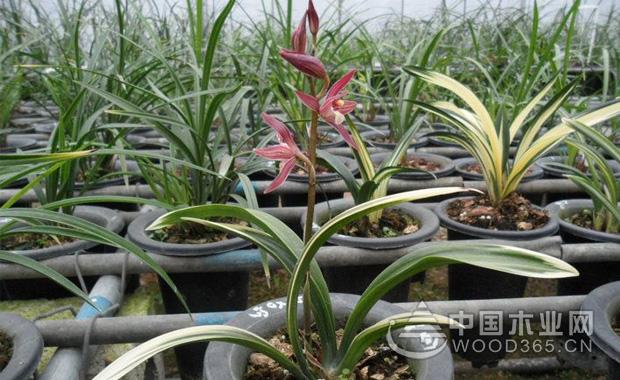Molan's conservation method
The scientific name of Molan is also known as the old-fashioned Lan, native to China, Vietnam and Myanmar. The leaves are clustered on elliptical pseudobulbs with blade-shaped swords. The color of the orchid is beautiful, the leaf shape is unique, and it is the breeding mother of many precious ornamental orchids. Therefore, it has been deeply loved by people and widely cultivated. It is wild in East China, South China and Southwest China.

Melan is a semi-negative plant that requires "warm, moist, astigmatism, ventilation" environmental conditions. Growth depends on maintenance management. The cultivation site requires good ventilation and shading facilities. Molan's requirements for water are mainly determined by temperature, light intensity and plant growth.
The sorghum of the Ming dynasty in the appendix of the "Blue Spectrum" in the "Peland Four Rings" æ›°: "Spring does not come out, summer is not day, autumn is not dry, winter is not wet." These twelve characters are indeed the experience of raising orchids. . It is best to use rainwater or snow water with water. If you must use orchid water to water the orchid, it must be exposed for a day before it can be applied. Watering the watering can, do not spray water into the flower buds to avoid rot. In the summer, avoid showers and showers.
1, hi Yin, and avoid glare
According to repeated field visits, Molando grew up in the sunny jungle. According to the experiment of the National Lanzhou Research Center of South China Normal University and the Plant Department of the National University of Singapore, the light compensation point of the Molan photosynthesis is about half of the spring morning light, and the saturation point of the light is about 10% to 15% of the summer noon light intensity. . This fully confirms that Melan is a typical negative plant. The sun is too strong and it will cause daily burning. Therefore, winter and spring should have a shade density of 60% to 70%; summer and autumn should have a shade density of 85% to 90%.
2, like warmth, and avoid severe cold
The suitable temperature for the growth of Molan is 25-28 °C, and the temperature during the dormancy period is 12-15 °C during the day and 8-12 °C during the night. It is not resistant to low temperatures below 3 °C, and even a transient low temperature below 2 °C can cause freezing damage.
3, like wet, and avoid dryness
Molan was born in the rainy south of the wild forest, like wet and avoid dryness. The growth period requires 75% to 80% of the relative humidity of the air, and in winter, more than 50% of the relative humidity of the air is required. If the surface of the substrate is dry, it needs to be watered as soon as possible. Do not overdo it for too long.
4, hi fat, and avoid turbidity
According to the relevant departments, the leaves and pseudobulbs of Molan contain a large amount of phosphorus, and the old roots also have a strong ability to absorb phosphorus. Therefore, the amount of phosphorus required by Molan is less; The demand is large. Molan leaves are wide and require more potassium nutrition. The lignin and cellulose of the leaves can effectively increase and enhance the support of the leaves, so as not to be weak. Therefore, the suitable ratio of Molan to the three elements of fertilizer is 35% nitrogen: 20%: 45%.
Although Molan prefers fertilizer, it should not be high in fertilizer concentration and frequent fertilization. Instead, it requires 0.1% of chemical fertilizer and 0.1% to 0.2% of organic liquid fertilizer. It is applied once every 15 to 20 days.
Moline's pest control
The main diseases of orchids are: fungal diseases, also known as chalk disease. It often occurs in the mildew season. At first, white hyphae were produced at the base of the soil and leaves, causing the pseudobulb to rot.
Control method: remove the contaminated soil, spray with 500 times solution of pentachloronitrobenzene powder.
Black spot, also known as anthrax. It often occurs in hot and rainy summers. Brown spots appear on the leaves at the beginning, and increase and become black spots. More harmful sprouts, when the whole plant is dead in severe cases.
Control method: remove the diseased plant, strengthen ventilation, reduce humidity; control with 65% of sensen zinc powder 600 times solution or 50% carbendazim 800 times solution. Once every half month, 3 times in a row. In the case of high humidity and poor ventilation, scale insect damage often occurs. The scale insect is commonly known as Lancome and is difficult to eradicate. It can be controlled by using 20% ​​omethoate EC 500-800 times liquid.
Wood Vase,Modern Wood Vase,Natural Wood Vase,Wooden Vase Decor
CSL WOOD ART FACTORY , https://www.cslwoodart.com